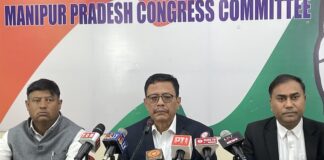New Delhi: Yes Bank has reached the “peak” of asset quality stress after reporting heightened challenges in the December quarter earnings, even though there can be a jump in the gross non-performing assets (GNPA) ratio in the March quarter, a top official has said.
The GNPA ratio may shoot up to touch 20 per cent of the overall assets once the Supreme Court order on bad asset recognition comes in, the official said.
In the results released over the weekend, the bank reported a GNPA ratio of 15.36 per cent, but admitted that if one were to include the standstill NPAs (ones which were not recognised due to SC order) and the restructured assets, the overall stressed assets would be higher.
“The stress we saw is a peak and there are many positives on the asset quality like collections being improving, cheque bounce rates coming down to industry averages and the recoveries being high,” PTI quoted its managing director and chief executive Prashant Kumar as saying.
The bank had said that a total of over Rs 18,551 crore of its Rs 1.69 lakh crore of advances were in some stress as of December 31, 2020. The standstill accounts included Rs 8,322 crore, advances overdue for between 61-90 days were at Rs 6,537 crore and other COVID-related restructured loans were at Rs 3,692 crore. Of the Rs 18,551 crore, restructuring has been invoked in Rs 8,062 crore, it said.
Kumar said many accounts pay up as the 90-day deadline approaches, while many accounts are companies with strong fundamentals which are experiencing difficulties because of the pandemic.
“We get two years to deal with the restructured advances, while for the remaining Rs 10,000 crore, we are confident of resolving in 12 to 18 months,” he said, reiterating that the stress is at its peak. In the interim, existing bankers will have to support the stressed accounts with new credit if it is required to get the business going, he said.
He said the SC order on loan recognition, which is widely expected to come during the ongoing quarter, may result in the GNPA ratio number shooting up to 19.5 or may be 20 per cent as well. It can be noted that the SC has disallowed banks from recognizing NPAs from August 31, when the 6-month moratorium on loan repayments ended.
Apart from increasing the NPA ratios, there will also be a write-back of up to Rs 800 crore in income already recognised as interest in the preceding quarters, he said.
On the recovery front, he exuded confidence of getting back over Rs 2,000 crore from borrowers in the fourth quarter and some part of it may get spilled over to the next quarter as borrowers mount challenges.
The bank does not have a lot to look forward to from the DHFL resolution, Kumar said, pointing out that its entire Rs 1,000 crore exposure to the mortgage financier to be taken over by Piramal Finance as part of a banks-led resolution is “unsecured”.
He said the secured lenders are getting around 35 per cent of their loans spread over six years and unsecured ones like itself will have to wait for what the committee of creditors (CoC) decides.


